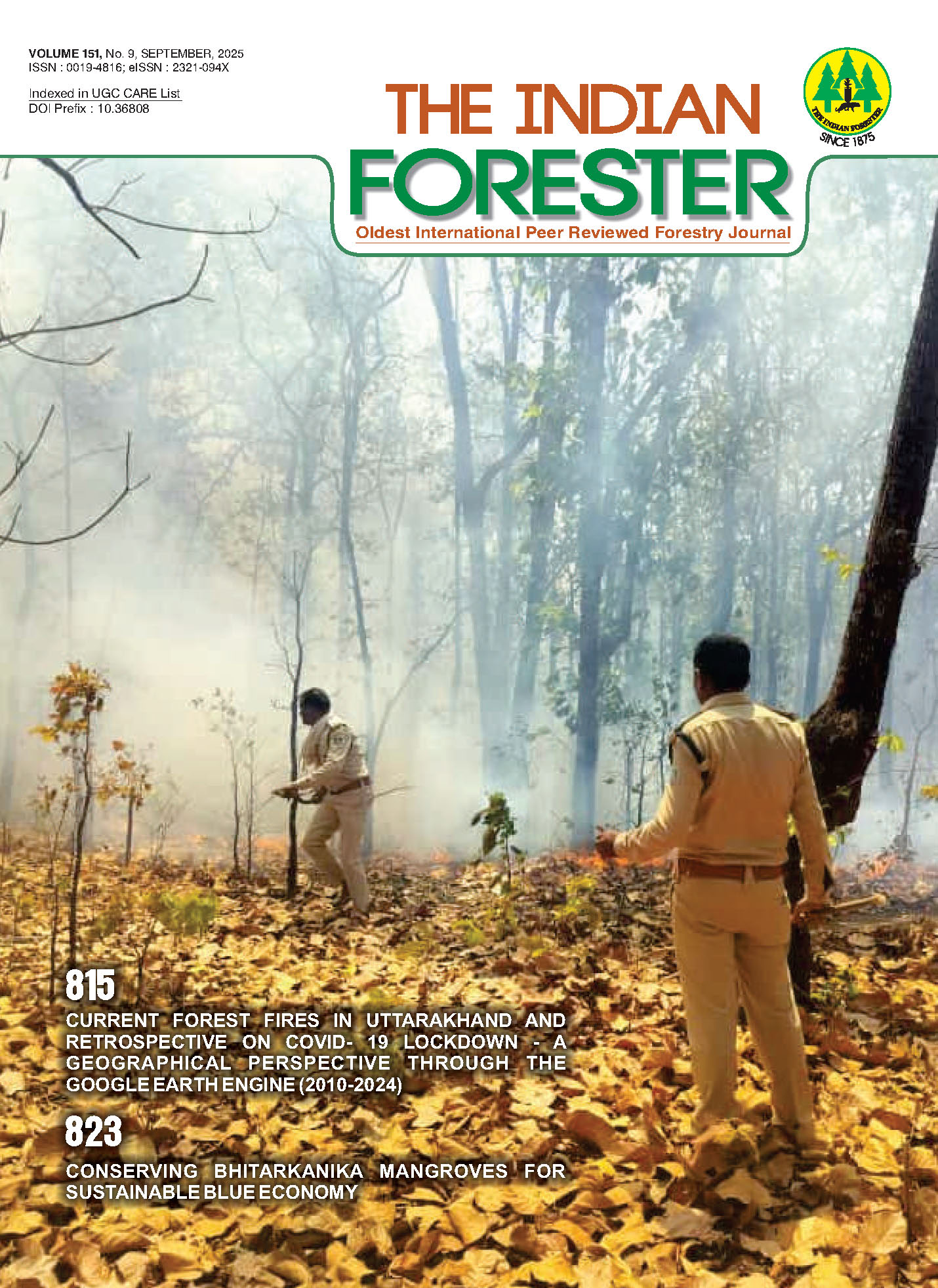The Declining Diversity of certain tree species may Contribute to the Threat to some Epiphytic Orchids in Ajodhya foothills, West Bengal, India
DOI:
https://doi.org/10.36808/if/2025/v151i9/170810Keywords:
Basal area, Dry deciduous, Important value index, Epiphytic orchids, Phytosociology, Tree diversity.Abstract
A Forest patch exhibits a diverse array of tree species, few species function as host plants for epiphytic orchids, providing them with the necessary support and habitat for growth and survival. Urbanization, Forest fire and unauthorized felling of valuable tree species and the invasion of alien species are consistently degrading the species richness and species density of various forest patches in Purulia. Sustainable policies can maintain the ecological balance such as increase the species richness and species density of these valuable forest areas. Which in turn enhance the forest health, environmental health, and economic reliability of Purulia in future. Consequently, investigating the diversity of tree species across different forest ecosystems is crucial for gaining insights into the specific host plant associations of epiphytic orchids, which is essential for understanding their ecological dependencies. The primary objective of the present study is to analyze tree species diversity in the Ajodhya Forest Range of Purulia district, concurrently with observing the density of host plants of significant epiphytic orchids. During the present study a total of 32 tree species belonging to 18 families and 10 number of epiphytic Orchids were documented. Total tree species density, concentration of dominance value, the species diversity and similarity index were calculated. The present study provides baseline information phyto-diversity, epiphytic orchid presence, and host plant density in Ajodhya Forest. The findings establish a critical baseline for conservation, research, and sustainable management of this ecosystem.
References
Curtis J.T. (1959). The Vegetation of Wisconsin, An ordination of Plant Communities. University Wisconsin Press, Madison Wisconsin, USA.
Chakraborti S.D., Oraon D. and Samanta S. (2021). Orchidaceae in Ajodhya Hills of Purulia, West Bengal, India: diversity, threats and conservation strategies. Richardiana, 5: 267-282.
Harvais G. and Hadley G (1967). The Relation between Host and Endophyte in Orchid Mycorrhiza. New Phytol., 66: 205-215.
Karmakar S. and Rahaman C.H. (2022). Extended Distribution of Habenaria gibsonii var. foetida Blatt. & McCann (Orchidaceae) from Southern West Bengal, India. Research Journal of Agricultural Sciences, 13: 412–414.
Kumar R., Baishya R., Gawdiya S. and Verma A. (2022). Phytosociology and diversity assessment of Tree species of Northern Delhi Ridge. Forest. EM International, ISSN 0971765X, pp. (S198-S201).
Misra R. (1968). Ecology Work book Oxford and IBH Publishing Co, New Delhi.
Mitra S. (2021). Diversity of the orchid's flora of West Bengal, India. Plant Archives. 21(2) : 740-756.
Mitra S., Bandyopadhyay S. and Mukherjee S.K. (2020). Taxonomic Census of the Orchids of West Bengal, India. Plant Archives. 20(2): 3951-3980.
Phillips A., (1959). Holtdryden book, Henry Halt and Co: Inc, New York.
Pilania P., Gujar K., Joshi P.M., Shrivastav S.C. and Panchal N.S. (2015). Phytosociological and ethanobotanical study of trees in a tropical dry deciduous forest in Panchmahal district of Gujarat, Western India. IndianForester, 141(4): 422-427.
Roy A.K. (2021). Ethnomedicinal Value of Epiphytic Orchids in Foot Hills of Himalaya in Tea Garden Area of Terai, West Bengal, India. J. Orchid Soc. India, 35: 135-139.
Shannon C.E. and Weaver W. (1963). The Mathematical theory of Communication. University of Illinois Press, Urbana,USA.
Simpson H. (1949). Measurement of Diversity. Nature, 163: 688.
Thapa B., Sharma P., Pradhan S. and Pradhan P. (2022). Aerides multiflora Roxb.: An Important Ornamental and Medicinal Orchid. Journal of Ayurvedic and Herbal Medicine, 8(4): 236-240.
Downloads
Downloads
Published
How to Cite
Issue
Section
License
Unless otherwise stated, copyright or similar rights in all materials presented on the site, including graphical images, are owned by Indian Forester.





